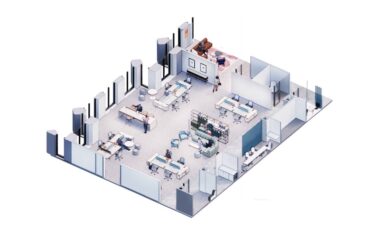
Our everyday clothing serves as an exciting means of expressing our uniqueness while still remaining comfortable. The clothes in our closets reveal a great deal about us. However, the fashion industry has a dark side. It is responsible for 10% of all global carbon emissions and consumes nearly 1.5 trillion liters of water annually. This makes it essential to curate a conscious closet that embodies not only our style but also our personal values. The ability to build more sustainable closets is within reach if we slow down our purchasing and give our clothing a new sense of worth.
What Is the Problem With Fast Fashion?
We’ve all had the exhilarating experience of finding the perfect top or the most flattering pair of jeans. We find ourselves snatching up a new, trendy outfit for ourselves all of a sudden. Purchasing fast fashion is only one of the many issues that society needs to address today. Clothing care has an impact on the longevity of our closets, and how we care for our clothes.
Let us consider the case of a shirt from a fast-fashion brand. When a button falls off or becomes stained, it may be more convenient to discard or donate the item. In order to maintain a conscious closet, you must invest extra time and effort to ensure that your clothes last. Ultimately, it comes down to treating your clothes with respect and appreciating the resources, human ingenuity, time, and energy that went into making them.
What Is A Sustainable Wardrobe?
Sustainable wardrobes may be perplexing. When it comes to the fashion industry, sustainability can take many forms. In general, an environmentally friendly wardrobe has a less negative impact on our planet than a conventional wardrobe. For example, organic cotton has the lowest environmental impact of any of the cotton varieties currently available.
Recycle polyester instead of purchasing virgin polyester fabric to ensure that you are dressing for success while being environmentally conscious. In addition to recycling clothing and purchasing environmentally friendly items, there are a variety of ways to create a closet that nature would adore. Start with our suggestions for how to make your wardrobe more environmentally friendly by following the steps below.
Tips for Building a Sustainable Wardrobe
Start With the Organization for a Sustainable Wardrobe
When it comes to putting together a wardrobe that will last, the first step is to prioritize organization. The environmentally friendly wardrobe of your dreams may already exist in your possession. You simply need to look for it. Even though it appears to be a difficult task, it will reveal exactly what you do and do not require.
To begin, arrange all of your clothing on a table and categorize it according to the categories you have created. Then, divide each stack into two categories: items you want to keep and items you don’t care about. Determine whether or not you already have a sustainable wardrobe by taking a thorough inventory of everything you possess.
Keep in mind to recycle any unnecessary items. When it comes to creating a more environmentally friendly wardrobe, recycling is an important step.
Do Your Research
Following your thorough examination of your belongings, it is time to begin searching for information on the internet. Look for brands that source, manufacture, and use ethical materials to produce clothing and eco-friendly sandals that are environmentally fashionable. Make a list of companies that are upfront and honest about where their products are made.
The second round of research should be to identify companies that hold their suppliers accountable for meeting high environmental standards. They should make demonstrable efforts to protect workers and the environment. Inquire about a company’s core values to determine whether they make use of environmentally friendly materials.
This is also a good time to assess whether or not you require new clothing at this time.
Revise Your Shopping Habits
Despite the fact that you’ve done your research, it’s important to review your shopping habits before you go shopping. When it comes to developing a more environmentally friendly wardrobe, shift your perspective from want to need. Having an excessive amount of clothing just in case will result in a wardrobe that takes up valuable space. And, in the end, results in wasted materials and resources. Shopping with this mindset results in the creation of a closet that you have to go through every morning, wasting your valuable time. By investing in high-quality pieces that you will use on a regular basis, you can save both time and money, as well as protect the environment.
Shop for Versatility for Your Sustainble Wardrobe
When it comes to environmentally friendly shopping, the ability to shop for versatility is essential. Make a point of purchasing pieces that you can wear in a variety of ways and during multiple seasons. In terms of shopping for versatility, putting together a capsule wardrobe is the ultimate goal when it comes to wardrobe shopping. To do this, you must pare down your existing wardrobe to a small collection that can promote a variety of looks by mixing and matching pieces. Generally speaking, most capsule wardrobes, including shoes, are comprised of fewer than 30 pieces in total on average.
Invest Wisely
When compared to purchasing inexpensive replacements on a regular basis, it may be more cost-effective to invest more in long-lasting pieces in the beginning. It’s important to invest in pieces that you can wear daily, rather than pieces that are only worn on special occasions. Following a single outing in a garment purchased for a one-time occasion, it is likely that the garment will remain in your closet. When it comes to high-quality pieces, such as a classic denim jacket, they will be worn on a regular basis. When it comes to building a more environmentally friendly wardrobe, it is critical to make wise investments in your everyday clothing and accessories.
Repair, Revive, and Recycle
Last but not least, when designing a more environmentally friendly wardrobe, keep in mind to repair, revive, and recycle as much as possible. In the event that you have broken items in your closet, rather than throwing them away, learn how to repair them by watching instructional videos. If fixing things isn’t your thing, find a reputable tailor to do the job for you. The practice of developing rather than discarding is the gold standard in the field of sustainability.
Clothing that has seen better days can be repurposed into something new, or they can be donated to someone who will appreciate them as a new addition to their wardrobe. Make plans with your friends to host a safe swap party in order to find a new home for an item that has been gently used previously. We encourage you to consider donating your unwanted clothing to a worthy cause. When it comes to long-term revitalization, the possibilities are virtually limitless.
Look for textile recycling centers in your area if all else fails and you want to properly dispose of your well-worn garments in an environmentally friendly manner. Not able to locate a center in your area for some reason? Ask your local thrift stores how they dispose of clothing that doesn’t sell to learn more about their recycling programs. Recyclable materials are perfectly acceptable if that is the solution you are seeking.
Conclusion
Even outside of our personal closets, there are numerous ways that we can make a difference on a global scale by being more environmentally conscious. We have the misconception that environmentally friendly fashion is only available from new brands, but the clothes that have already been produced are also environmentally friendly in nature. Making use of what we already have and making every effort to purchase only what we truly require are the best ways to save money.
Featured Image by Olena Sergienko
More to Love!
Tips for Creating a Sustainable Beauty Routine
5 Sustainable Home Improvement Ideas



